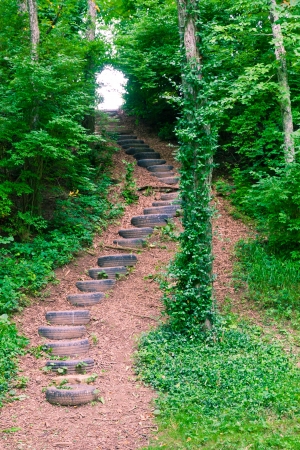Introduction: Embracing the British Countryside
Few pastimes capture the spirit of the UK quite like a walk through its diverse landscapes. From rolling Cotswold hills to the dramatic peaks of the Lake District, walking is woven into the fabric of British culture, offering an accessible escape for all ages and abilities. Over recent years, landscape photography has become an increasingly popular companion to this cherished tradition. With a camera in hand—whether a smartphone or a professional DSLR—walkers are discovering new ways to deepen their connection with nature, document their journeys, and share the unique beauty of Britain’s outdoors. This synergy between walking and photography invites us to pause, observe, and appreciate the subtle changes in light, weather, and wildlife that make each outing memorable. Whether capturing misty mornings on Dartmoor or golden sunsets over the Yorkshire Dales, landscape photography not only preserves personal memories but also fosters a greater appreciation for the countryside we cherish.
Essential Gear for the British Outdoors
When venturing out to capture the beauty of Britain’s landscapes, walkers need to be equipped with gear that can withstand unpredictable weather and challenging terrain. The right kit not only ensures your comfort and safety but also maximises photographic opportunities regardless of conditions. Below is a practical guide to essential clothing, walking gear, and camera equipment tailored specifically for British outdoor adventures.
Clothing: Layering for All Seasons
British weather is famously changeable; a sunny morning can quickly turn into a damp afternoon. Layering is key. Start with a moisture-wicking base layer to keep sweat off your skin. Add an insulating mid-layer—such as a fleece—for warmth, and finish with a waterproof, breathable outer shell to protect against rain and wind. Don’t forget a hat and gloves, even in summer months, as temperatures can drop unexpectedly in exposed areas.
Recommended Clothing Layers
| Layer | Recommended Material | Purpose |
|---|---|---|
| Base Layer | Merino Wool or Synthetic | Moisture Management |
| Mid Layer | Fleece or Lightweight Down | Insulation/Warmth |
| Outer Layer | Gore-Tex or eVent Fabric | Waterproof & Windproof Protection |
| Accessories | Wool/Technical Fibres | Head, Neck & Hand Warmth |
Walking Kit: Prepared for Rugged Terrain
The British countryside features everything from muddy footpaths to rocky moorlands. Sturdy, waterproof walking boots are essential for stability and protection. A well-fitted rucksack (20–30 litres) allows you to carry spare clothing, food, water, and camera gear without strain. Trekking poles can help on steep ascents or descents. Always pack an OS map and compass, as phone signal can be patchy in remote areas.
Checklist: Walking Kit Essentials
- Waterproof boots with good grip
- Comfortable, layered socks (avoid cotton)
- Packed lunch and high-energy snacks (flapjacks are a classic choice)
- Sufficient water (at least 1 litre)
- Map, compass, and/or GPS device
- Trekking poles (optional but useful)
- Compact first aid kit and emergency whistle
- Packed rain cover for your rucksack
Photographic Equipment: Ready for Any Weather
The ever-shifting light and weather patterns make the British outdoors both rewarding and challenging for landscape photography. Choose a lightweight yet sturdy tripod for stability on uneven ground. A weather-sealed camera body and lenses are advisable; if using less robust kit, invest in rain covers or protective bags. Carry lens cloths for dealing with drizzle or sea spray. Neutral density (ND) filters help manage contrast during bright spells, while a polariser enhances skies and reduces glare after rainfall.
Quick Guide: Photographic Gear for Walkers
| Equipment Type | Recommended Features |
|---|---|
| Camera Body & Lens | Weather-sealed or use protective cover; versatile zoom lens (e.g., 24-105mm) |
| Tripod | Lightweight carbon fibre; quick-release legs; non-slip feet |
| Lenses/Filters | Circular polariser; ND filters; UV filter for extra lens protection |
| Bags/Cases | Padded rucksack insert; waterproof camera bag or dry sack |
| Sundries | Lens cloths; spare batteries (cold weather drains power quickly); memory cards |
A Final Word on Packing Light but Smart
The goal is to balance weight with utility—every item should serve a clear purpose whether it’s safeguarding your health or ensuring you never miss the perfect shot. By preparing thoughtfully for Britain’s unique conditions, walkers can enjoy their photographic adventures safely while capturing the best of the British outdoors.

3. Finding Photographic Inspiration on British Walks
Britain’s diverse landscapes offer an endless source of inspiration for walkers with a passion for landscape photography. Whether you are trekking through the rolling hills of the Cotswolds, wandering the windswept moorlands of Yorkshire, or exploring rugged coastal paths in Cornwall, each environment presents unique photographic opportunities. The key to capturing the quintessential British outdoors lies in knowing where and how to seek out these classic scenes.
National Parks: Iconic Vistas and Varied Terrain
The UK boasts 15 national parks, each providing a wealth of dramatic scenery. For sweeping vistas, head to the Lake District or Snowdonia—both are renowned for their lakes, mountains, and atmospheric weather conditions that create ever-changing light. Early mornings or late afternoons often yield the best natural lighting, adding depth and contrast to your images.
Moorlands: Evocative and Atmospheric Settings
The moorlands of Dartmoor and the North York Moors are celebrated for their wild beauty. Look for distinctive features such as ancient stone tors, heather-covered expanses, and solitary trees silhouetted against open skies. Moody weather can add drama to your shots, so don’t shy away from mist or overcast days—these conditions are typical in Britain and can result in evocative photographs.
Coastal Paths: Dramatic Seascapes
Britain’s coastline is among its greatest assets for photographers. The South West Coast Path or Pembrokeshire Coast Path offer access to towering cliffs, secluded coves, and picturesque fishing villages. Use leading lines like winding paths or cliff edges to draw viewers into your photos, and experiment with different vantage points to capture both expansive seascapes and intimate shoreline details.
Local Green Spaces: Everyday Inspiration
You don’t have to travel far to find photographic subjects; many towns and cities across Britain have accessible green spaces such as commons, woodlands, and riverside walks. Urban parks often feature historic architecture, ponds, or ancient trees—perfect backdrops for practicing composition techniques close to home.
Tips for Seeking Out Classic British Landscapes
- Research your route beforehand using Ordnance Survey maps and local guides to pinpoint scenic viewpoints.
- Check seasonal highlights—bluebell woods in spring, golden bracken in autumn—for colourful compositions.
- Embrace Britain’s unpredictable weather by packing waterproofs and lens cloths; sometimes rain or fog provides unique atmosphere.
- Be patient and observant; wildlife encounters or fleeting light can transform an ordinary scene into something extraordinary.
By taking time to explore varied terrains and remaining open to changing conditions, walkers can consistently discover new sources of photographic inspiration across the British countryside.
4. Capturing British Light and Weather
The UK’s landscape offers a rich tapestry of light and weather conditions that can transform a familiar view into something spectacular. For walkers with a passion for photography, learning to harness this ever-changing environment is key to capturing the best of the British outdoors.
Understanding the British Weather
The British Isles are famous for their unpredictable weather, which varies not only from season to season but often hour by hour. Rather than seeing this as a hindrance, successful landscape photographers use these changes to their advantage. Misty mornings in the Lake District, sudden downpours on Dartmoor, or shafts of sunlight piercing through clouds over the Yorkshire Dales all offer unique photographic opportunities.
Strategies for Maximising Light and Mood
- Embrace Golden Hours: Early mornings and late afternoons provide soft, warm light that enhances textures and colours. Plan your walks to coincide with sunrise or sunset for the most atmospheric shots.
- Work with Cloud Cover: Overcast skies act as a giant softbox, reducing harsh shadows and creating even lighting — perfect for capturing the lush greens of British woodlands or moody coastal scenes.
- Use Rain Creatively: After rain, landscapes come alive with saturated colours and reflections in puddles. Carry a lens cloth to keep your camera dry and look for interesting water effects.
- Chase Dramatic Weather: Storm clouds, fog, or fleeting rainbows can add drama to your images. Always be ready to adapt your route if you spot an approaching weather front.
Seasonal Light and Weather Patterns
| Season | Typical Light | Weather Features | Photographic Tips |
|---|---|---|---|
| Spring | Crisp mornings, lengthening daylight | Showers, fresh growth | Shoot early for dew on grass; capture vibrant new foliage |
| Summer | Bright, high sun; long evenings | Sporadic heatwaves, occasional thunderstorms | Avoid midday glare; seek golden hours or dramatic storm skies |
| Autumn | Warm tones, softer light | Mist, rapid weather shifts | Capture colourful leaves; look for fog in valleys at dawn |
| Winter | Pale sun, short days | Frost, snow, clear air after storms | Shoot during rare clear spells; highlight frost patterns and low-angle light |
Preparation Is Key
No matter the forecast, British walkers should always pack waterproofs and protective covers for their kit. Flexible planning allows you to make the most of sudden changes in weather—sometimes the best photo comes just after a squall passes or when sunlight breaks through heavy cloud. By understanding local conditions and being prepared to adapt quickly, you’ll be ready to capture the authentic atmosphere of the British outdoors at its most captivating.
5. Composition Techniques for Walkers
One of the most rewarding aspects of landscape photography while walking in the British countryside is the dynamic nature of your perspective. As a walker, you’re constantly on the move, and this mobility offers unique opportunities to create striking images that static photographers may not easily access. Understanding and applying key composition techniques will help you capture the authentic spirit of your journey through Britain’s diverse landscapes.
Framing as You Move
Framing is crucial for telling a compelling visual story. Use natural elements like drystone walls, hedgerows, tree branches, or even a stile to frame your scene. These features are abundant in the British outdoors and can add depth and context to your shots. Don’t hesitate to pause when you notice an inviting opening between trees or a gap in a fence—these moments often lead to evocative compositions unique to walkers’ viewpoints.
Perspective: A Walker’s Advantage
Unlike stationary photographers, walkers experience ever-changing perspectives. Make the most of this by experimenting with low and high angles. Try crouching down to include wildflowers in the foreground along a Cotswold path, or find a slight rise to give scale to the rolling hills of the Yorkshire Dales. By incorporating footpaths, winding streams, or ancient tracks into your compositions, you guide the viewer’s eye through the image, echoing your own journey.
Leading Lines and Natural Pathways
British landscapes are criss-crossed with public footpaths, dry stone walls, and riverbanks. Use these as leading lines to draw attention toward focal points such as distant peaks, church spires, or dramatic skies. A winding path not only adds visual interest but also captures the essence of walking—inviting viewers to imagine themselves stepping into the scene.
Capturing Atmosphere and Mood
The British outdoors is renowned for its atmospheric conditions—misty mornings on Dartmoor, brooding clouds over Hadrian’s Wall, or golden light filtering through Lake District woodlands. Take advantage of Britain’s changeable weather by embracing mood in your compositions. Look for reflections in puddles after a rain shower or shafts of sunlight breaking through stormy skies; these fleeting moments can transform an ordinary scene into something memorable.
Quick Tips for Walkers’ Photography
– Keep your camera accessible—moments pass quickly on foot.
– Use wide-angle lenses to capture sweeping vistas and foreground detail.
– Don’t be afraid of imperfect weather; it often produces dramatic results.
– Take multiple shots from slightly different positions as you walk; subtle changes can make all the difference.
– Remember: your journey is unique. Let each photograph tell part of that story.
By mastering these composition techniques as a walker, you’ll create images that truly reflect both the beauty and character of the British outdoors—as seen from the ever-changing vantage point of someone exploring it on foot.
6. Respecting the Land: Rights of Way and Responsible Photography
Understanding Walkers’ Rights in the British Countryside
One of the joys of landscape photography in Britain is the extensive network of public footpaths, bridleways, and open access land that allows walkers to explore some of the country’s most stunning scenery. In England and Wales, these rights of way are legally protected, granting members of the public the right to pass through private land along designated routes. Scotland’s “right to roam” offers even broader access, provided walkers act responsibly. It’s essential for photographers to know where they can legally walk and shoot, always referring to Ordnance Survey maps or reputable walking apps for up-to-date information.
The Countryside Code: Your Guide to Responsible Exploration
The Countryside Code is a cornerstone document outlining how everyone should behave in rural areas. For landscape photographers, key principles include respecting other people, protecting the natural environment, and enjoying the outdoors responsibly. This means closing gates behind you, keeping dogs under control around livestock, and avoiding disturbance to wildlife—especially during sensitive times such as nesting season. Littering is strictly unacceptable; always take your rubbish home or use provided bins.
Sustainable Photography Practices
To minimise your impact while capturing Britain’s landscapes, stick to established paths to reduce erosion and avoid trampling on delicate flora. Refrain from picking wildflowers or removing natural objects like stones or fallen branches for compositions. When photographing popular spots, be conscious of overcrowding—sometimes it’s best to return at quieter times or discover lesser-known locations.
Respecting Privacy and Cultural Heritage
Many rights of way pass close to farms, homes, or historic sites. Always respect local residents’ privacy by not trespassing onto private land outside of marked routes, and avoid photographing people without permission. At heritage sites, adhere to any photography restrictions and never touch or climb on ancient structures.
Leave No Trace: Setting an Example
Your actions set a standard for others. Share images that reflect responsible behaviour—showing friends enjoying the view from a path rather than standing on fragile ground encourages good practice among fellow walkers and photographers alike.
By honouring the countryside’s rules and traditions, you help preserve Britain’s outdoor beauty for generations of walkers and photographers yet to come.
7. Sharing and Showcasing Your Walks
Once youve captured the stunning British landscapes during your walks, sharing your photography is a meaningful way to connect with others and celebrate the UKs rich outdoor heritage. There are various avenues—both local and online—to showcase your work, each offering unique opportunities for engagement and community building.
Local Sharing: Connecting with Community
Begin by exploring local options such as photography clubs, walking groups, or community centres. Many towns and villages across Britain have active societies where members regularly organise exhibitions or photo walks. Participating in local competitions or displaying your prints in public spaces, like libraries or cafés, helps foster appreciation for the British outdoors while establishing connections with fellow enthusiasts.
Online Platforms: Reaching a Wider Audience
Social media platforms like Instagram, Flickr, and Facebook groups dedicated to UK landscape photography are excellent places to share your images with a broader audience. When posting online, use hashtags relevant to British locations (e.g., #LakeDistrictWalks, #PeakDistrictViews) to attract viewers who share your passion. Consider joining forums such as Talk Photography or The Outdoor Photographer of the Year community, where you can exchange advice, receive constructive feedback, and find inspiration from others’ work.
Building an Inclusive Community
Sharing isn’t just about showcasing your own achievements; it’s about fostering dialogue and inclusivity. Engage actively by commenting on others’ photos, participating in group challenges, or even organising meet-ups. This collaborative spirit not only enhances your skills but also strengthens the network of walkers and photographers passionate about Britain’s natural beauty.
Celebrating Britain’s Outdoor Heritage
Your landscape photography contributes to the ongoing narrative of Britain’s outdoor spaces—from historic footpaths like the South West Coast Path to iconic peaks in Snowdonia. By documenting and sharing these walks, you help preserve their cultural significance and inspire others to explore responsibly. Consider collaborating with local heritage organisations or charities focused on conservation by donating images or supporting awareness campaigns.
Final Thoughts
Sharing your photographic journey is both rewarding and impactful. Whether through a gallery in your village hall or an online portfolio viewed worldwide, every image highlights the beauty of the British outdoors and encourages a collective appreciation for its preservation. Embrace these opportunities to build community and celebrate our shared landscapes—one photograph at a time.


